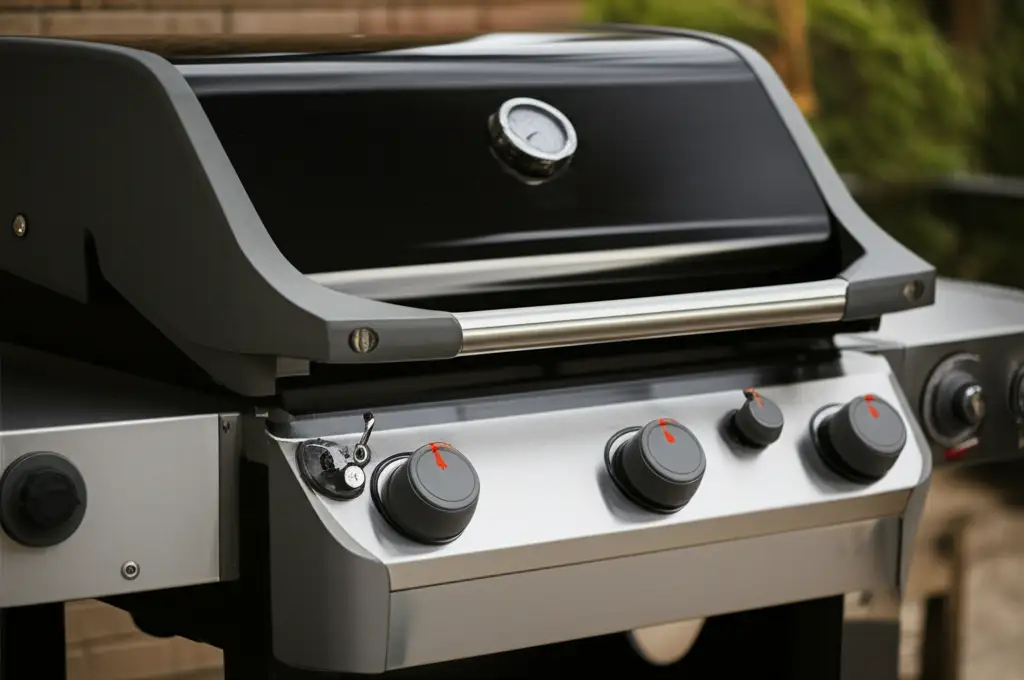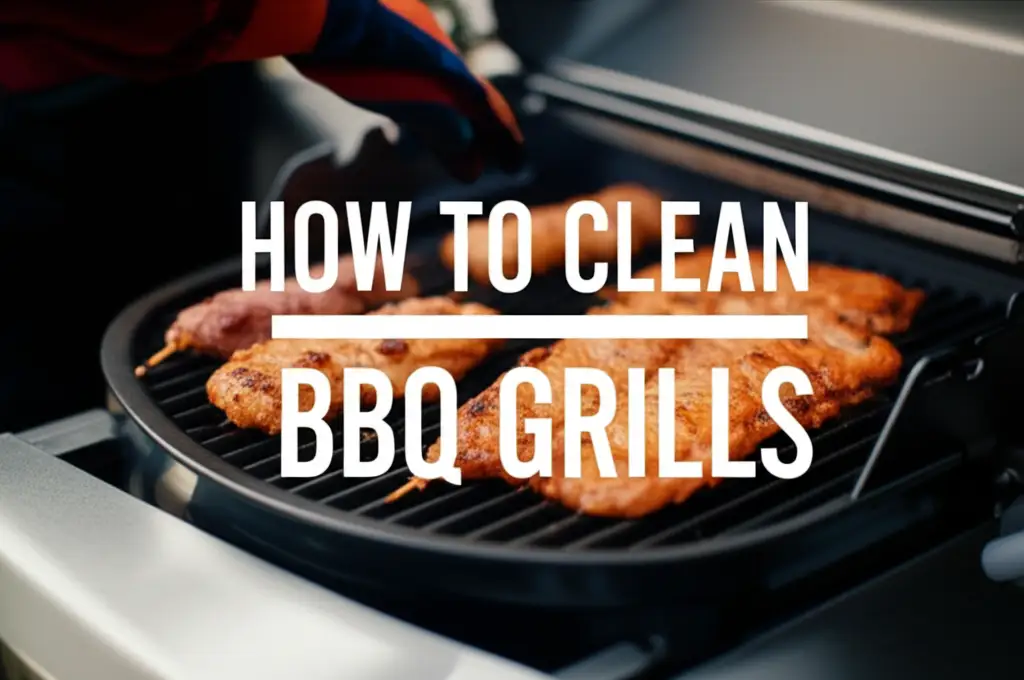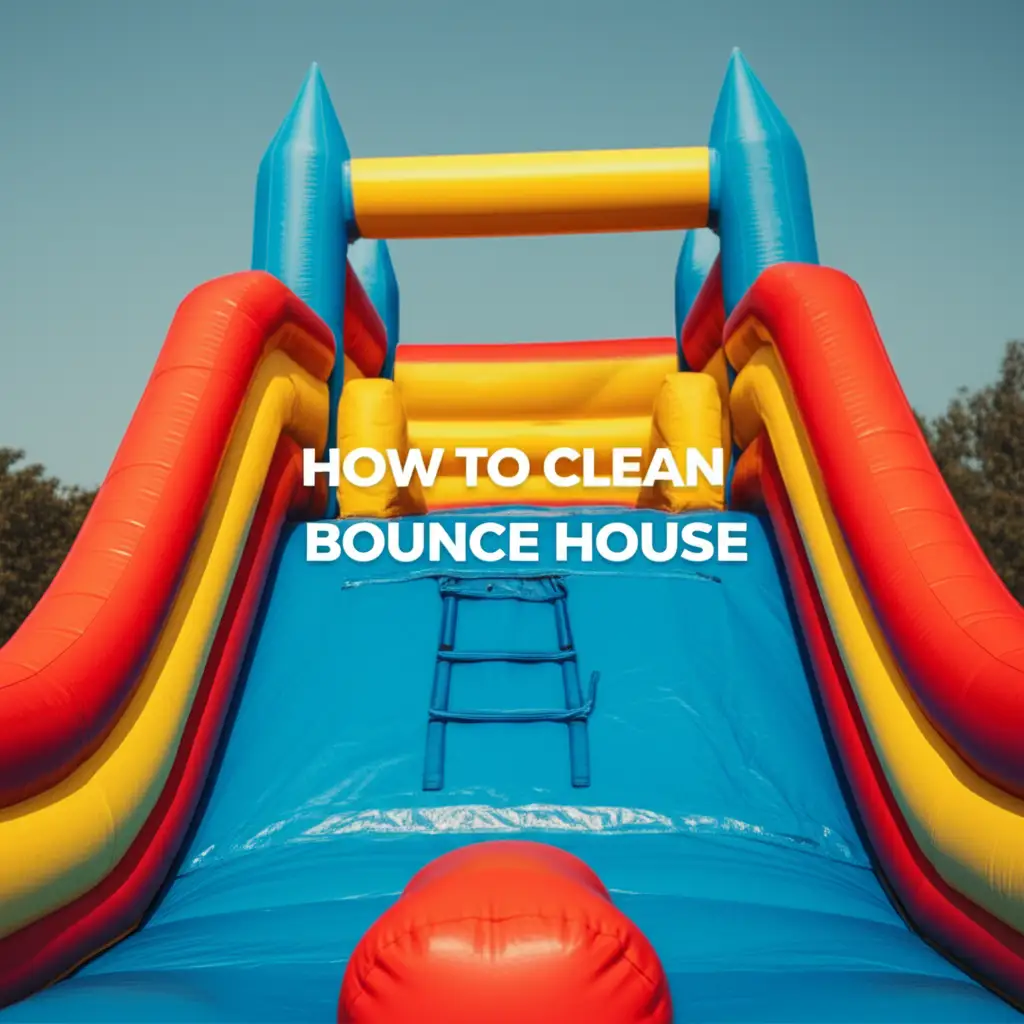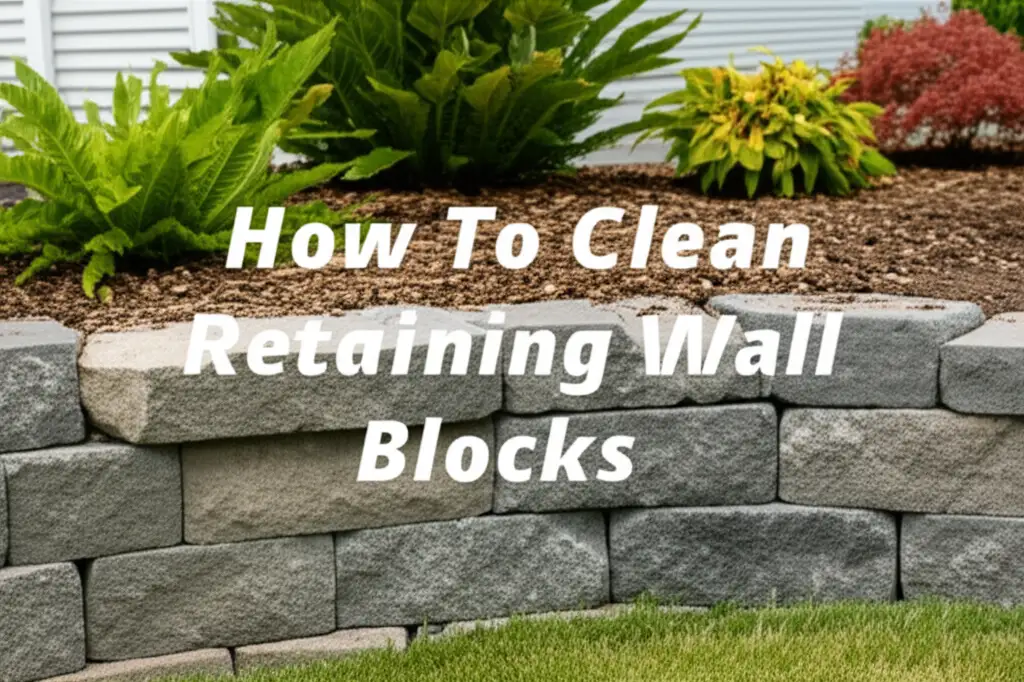· Outdoor Cleaning · 18 min read
How To Clean Outside Of Black Grill

Keep Your Black Grill Looking New
Your black grill is more than just a cooking tool; it is a centerpiece of your outdoor space. Over time, grease splatters, smoke residue, and outdoor elements dull its sleek appearance. Knowing how to clean outside of your black grill correctly ensures it not only performs well but also maintains its visual appeal. This article helps you understand the materials, gather the right tools, and follow effective steps to restore your grill’s original shine. We will cover everything from basic cleaning to tackling tough stains and preventing future damage.
Takeaway
- Identify your grill’s exterior material before cleaning.
- Use mild cleaners and soft cloths to protect the finish.
- Address rust and stubborn stains with appropriate, gentle methods.
- Regular maintenance prevents buildup and keeps your grill looking good.
- Avoid harsh chemicals or abrasive tools that can damage the black finish.
Cleaning the outside of your black grill requires specific steps to protect its finish. You will need to identify the grill’s material, then use gentle cleaning solutions with soft cloths or sponges. Always avoid abrasive cleaners or harsh chemicals to prevent scratches and discoloration. Regular wiping down after each use also helps prevent buildup.
Understanding Your Black Grill’s Exterior Material
Before you start cleaning, it helps to know what your grill’s exterior is made of. Black grills often feature different finishes, and each one reacts differently to cleaning agents. Using the wrong product can cause damage, streaks, or discoloration. Let’s look at common materials.
Many black grills have a powder-coated finish. This finish is a dry powder applied electrostatically and then cured under heat. It creates a hard, protective layer that resists scratches and rust. Powder coating is durable, but harsh chemicals can strip its protective qualities. I always recommend testing any new cleaner in a small, hidden spot first.
Another common material is porcelain enamel. This is a glass-like coating baked onto metal at high temperatures. Porcelain enamel is very smooth and resistant to rust and heat. It is also non-porous, making it easy to wipe clean. However, this finish can chip or crack if hit hard. Abrasive scrubbers will scratch it easily, so use gentle tools.
Some older or less expensive black grills might have painted steel exteriors. This material is more prone to scratching and rust if the paint chips. Water can get under chipped paint, causing rust to form quickly. You must be extra gentle when cleaning painted surfaces. I find that a simple soap and water solution works best here.
Finally, some high-end black grills might feature stainless steel that has been treated or colored to appear black. This could be a special coating or a black chrome finish. Stainless steel is known for its durability and resistance to corrosion. Cleaning products for stainless steel are often specific; using a general cleaner might leave streaks or dull the finish. Always check the manufacturer’s recommendations for these specialized finishes. Understanding the material ensures you choose the safest and most effective cleaning approach for your grill.
Gathering Your Grill Cleaning Essentials
Having the right tools and cleaning solutions makes the job much easier. You do not need a lot of specialized equipment to clean outside of your black grill. Most items are likely already in your home. Let’s make sure you are prepared before you begin.
First, you will need a few soft cloths or microfiber towels. These are essential for wiping down surfaces without scratching them. Avoid using abrasive sponges or steel wool pads, as they will easily damage the black finish, leaving unsightly marks. I keep a separate set of towels just for outdoor cleaning tasks.
Next, prepare your cleaning solutions. For general cleaning, a bucket of warm water mixed with a few drops of mild dish soap is usually sufficient. This simple solution can cut through light grease and grime effectively. For tougher spots, a diluted mixture of white vinegar and water (1:1 ratio) can work wonders. White vinegar is a natural degreaser and helps remove streaks. You can also explore options like specialized grill exterior cleaners, which are formulated to be safe for various finishes.
You might also need a soft-bristle brush, like a car washing brush, for larger surfaces or intricate areas. A small, soft toothbrush can help reach tight spots, like around knobs or hinges. These brushes help dislodge dirt without applying too much pressure or causing damage. Make sure the bristles are soft enough not to scratch the surface.
Finally, consider a spray bottle for applying your cleaning solutions evenly. This makes the process more efficient and ensures you do not oversaturate any particular area. Having a separate bucket of clean water for rinsing is also very useful. I often use a garden hose on a low-pressure setting for a quick rinse, especially for larger grills. Remember, proper preparation saves time and protects your investment.
Step-by-Step Guide to Cleaning a Black Grill Exterior
Cleaning your black grill’s exterior does not have to be a big chore. Following a simple, systematic approach helps you achieve a sparkling clean finish without damaging your grill. I always break down the process into manageable steps.
Initial Preparation and Safety
First, ensure your grill is completely cool before you start cleaning. A hot surface can cause cleaning solutions to evaporate too quickly, leaving streaks or even causing burns. Disconnect the gas line if it’s a gas grill, or remove charcoal if it’s a charcoal grill. Safety comes first. I also like to lay down a tarp or old newspapers under the grill to catch any drips and protect the patio or deck.
Removing Loose Debris
Begin by wiping away any loose dust, dirt, or spiderwebs from the grill’s exterior. A dry microfiber cloth works well for this initial pass. This prevents you from turning dust into muddy streaks once you introduce water. I make sure to get into all the nooks and crannies, including the lid, side shelves, and cabinet doors.
Applying the Cleaning Solution
Now, it is time to apply your chosen cleaning solution. For most black grill exteriors, a mild dish soap and warm water mixture is ideal. Dip a soft cloth into the soapy water, wring it out so it is damp but not dripping, and gently wipe down all exterior surfaces. For stubborn grease, you can also use a mixture of white vinegar and water. Spray the solution onto the greasy areas, let it sit for a few minutes to break down the grease, then wipe with a soft cloth. For specific grill components like stainless steel accents, you might also find it useful to know how to clean gold that has turned black if you have any similar tarnished parts on your grill, though this is less common for the main black body.
Gentle Scrubbing for Stuck-On Grime
For areas with stuck-on grime or dried splatters, use a soft-bristle brush or the soft side of a sponge. Gently scrub in small circular motions. Avoid excessive pressure, as this can scratch the black finish. The key is patience; let the cleaning solution do most of the work. If you have interior grill components that also need attention, consider methods like how to clean grill grates with aluminum foil for a thorough clean.
Rinsing the Grill Exterior
After scrubbing, it is crucial to rinse off all soap residue. Dip a clean cloth into plain water and wipe down the entire grill surface repeatedly. You want to remove all traces of soap to prevent streaks when it dries. For larger grills, a low-pressure stream from a garden hose can be used, but be careful not to get water into electrical components or the burner area. I find rinsing thoroughly helps prevent a dull, soapy film.
Drying and Polishing
The final step is drying the grill. Use a clean, dry microfiber towel to wipe down all surfaces. Drying immediately helps prevent water spots and streaks, especially on glossy black finishes. For an extra shine, you can use a small amount of a car wax designed for black paint or a specialized grill exterior polish. Apply it sparingly and buff with another clean, dry cloth. This adds a layer of protection and makes the grill look brand new. This detailed process ensures your black grill remains a source of pride in your outdoor kitchen.
Tackling Stubborn Stains and Rust on Black Grills
Even with regular cleaning, stubborn stains and rust can appear on your black grill’s exterior. These issues often require a bit more attention than simple dirt or grease. Addressing them promptly prevents permanent damage and keeps your grill looking its best. I have found specific approaches work well for these tougher challenges.
For persistent grease stains, a simple dish soap solution might not be strong enough. In these cases, I often turn to a degreaser specifically designed for outdoor use. Apply the degreaser to the stained area according to the product instructions. Allow it to sit for a few minutes, then gently scrub with a soft brush or non-abrasive sponge. Rinse thoroughly with clean water afterwards. Baking soda paste can also be effective. Mix baking soda with a small amount of water to form a paste, apply it to the stain, let it sit, then scrub and rinse.
Rust spots are a common problem, especially on painted or powder-coated black grills where the finish has been compromised. Minor surface rust can often be removed with a mix of white vinegar and water. Soak a cloth in the solution and place it over the rust spot for a few minutes. Then, gently rub the area with a soft brush or a crumpled piece of aluminum foil. Aluminum foil is softer than steel wool but abrasive enough to lift light rust without scratching. For more advanced rust, you might need a rust remover gel designed for metal, but always check if it is safe for your grill’s finish. After removing rust, always rinse the area and dry it completely. Applying a protective wax or paint touch-up can prevent rust from returning. This is similar to strategies you might use for other outdoor items, such as learning how to clean outside of house without pressure washer for general exterior cleaning where strong chemicals might be a concern.
Water spots, especially on glossy black finishes, can be annoying. These spots are usually caused by mineral deposits from hard water. To remove them, mix equal parts white vinegar and water in a spray bottle. Spray the solution onto the water spots, let it sit for a moment, then wipe away with a clean, dry microfiber cloth. Buff the area immediately for a streak-free shine. This vinegar solution is also excellent for cleaning black glass surfaces, much like how to clean black glass stove top without streaks.
Remember to always test any new cleaning product or method on an inconspicuous area first. This helps ensure it does not cause discoloration or damage to your specific grill’s finish. Patience and gentle techniques are key when tackling stubborn stains and rust.
Maintaining Your Black Grill’s Shine and Protecting Its Finish
Keeping your black grill looking pristine is an ongoing effort, not just a one-time cleaning event. Regular maintenance helps prevent dirt, grease, and rust buildup, preserving its sleek appearance and extending its lifespan. I have found that consistency is the real secret to a long-lasting shine.
One of the simplest and most effective maintenance tips is to wipe down your grill’s exterior after every use. Once the grill has cooled down, use a damp cloth or a paper towel to quickly wipe away any fresh grease splatters or food residue. This prevents them from drying and hardening, making future deep cleans much easier. A quick wipe only takes a minute, but it makes a huge difference in the long run.
Consider investing in a high-quality grill cover. A cover protects your grill from the elements: rain, sun, dust, and pollen. These environmental factors can accelerate wear and tear on your black finish, leading to fading or rust. Make sure the cover fits snugly and is made of breathable, weather-resistant material. I always ensure my grill is completely cool before putting the cover on to prevent condensation or heat damage.
Applying a protective coating periodically can also work wonders. For powder-coated or painted grills, a car wax designed for black paint can provide an excellent protective layer. This wax repels water and makes it harder for grime to stick. For stainless steel black grills, specialized stainless steel polish can help maintain their luster and resist fingerprints. Always apply these products sparingly with a microfiber cloth and buff to a shine. These coatings add a barrier against the elements and make subsequent cleanings simpler.
Periodically inspect your grill for any small scratches or chips in the finish. These tiny imperfections can be entry points for rust. If you find any, use a touch-up paint specifically designed for grills or the original manufacturer’s touch-up kit. Addressing these minor issues early prevents them from becoming larger, more expensive problems down the road. Remember, a little proactive care goes a long way in preserving the beauty and functionality of your black grill.
Common Mistakes to Avoid When Cleaning Black Grills
Cleaning the outside of your black grill seems straightforward, but some common mistakes can damage its finish or even shorten its lifespan. I have seen many people make these errors, so avoiding them is crucial for maintaining your grill’s appearance.
First, never use abrasive scrubbers or harsh chemicals. This is perhaps the most significant mistake. Steel wool, scouring pads, and gritty cleansers will scratch and dull a black finish, especially on powder-coated or porcelain enamel surfaces. These scratches not only look bad but also expose the underlying metal to rust. Strong chemicals like oven cleaner or bleach can also strip the finish or cause discoloration. Stick to mild soaps, vinegar solutions, or cleaners specifically labeled as safe for grill exteriors.
Another common error is cleaning a hot grill. Attempting to clean a grill while it is still warm or hot can cause cleaning solutions to flash-dry, leaving streaks and water spots. It also poses a burn risk. Always ensure your grill is completely cool to the touch before starting any cleaning process. Patience is a virtue here.
Over-saturating electrical components or burner areas with water is another pitfall. While the exterior needs cleaning, getting too much water into sensitive parts of the grill, especially gas grills, can lead to electrical issues or rust in the burners. If you use a hose, keep the spray light and directed away from vents or control panels. This is similar to how you would approach cleaning other complex outdoor appliances, like how to clean outside AC unit with water hose, where careful water application is key.
Ignoring the manufacturer’s instructions is also a mistake. Every grill is different, and manufacturers often provide specific cleaning recommendations for their materials and finishes. These instructions are there for a reason. Taking a moment to read your grill’s manual can save you from costly damage. They might suggest particular cleaners or methods for their unique black finish.
Finally, neglecting regular maintenance can lead to larger, more difficult cleaning jobs later. Allowing grease and grime to build up makes them harder to remove without harsh methods. A quick wipe-down after each use and a more thorough clean every few weeks prevents the need for aggressive scrubbing that could harm the finish. Avoiding these common mistakes helps ensure your black grill remains a beautiful, functional addition to your outdoor space for years to come.
Deep Cleaning and Seasonal Care for Your Black Grill
While regular wipe-downs are essential, your black grill also benefits from a deep clean a few times a year, typically at the beginning and end of grilling season. This more thorough cleaning addresses accumulated grime and prepares your grill for long-term storage or heavy use. It helps preserve the black finish and overall performance.
End-of-Season Deep Clean
At the end of the grilling season, I perform a comprehensive clean before storing the grill away for winter. First, remove all internal components like grates and heat tents. Clean these separately; for instance, you might use methods for how to clean grill grates with aluminum foil for the grates themselves. For the exterior, begin by emptying the grease tray. Use a spatula to scrape out any solidified grease, then wash the tray with hot, soapy water. This tray is often hidden but accumulates a lot of grime.
Next, focus on the interior of the grill body, which can also affect the exterior’s cleanliness if grease leaks. Scrape off any carbonized grease from the bottom and sides using a plastic scraper. Then, use a heavy-duty degreaser or a strong mixture of dish soap and hot water to clean the interior surfaces. Rinse well and allow it to dry completely.
For the exterior, follow the step-by-step cleaning guide outlined earlier, focusing on thorough scrubbing for any overlooked areas. Pay special attention to the lid, side tables, and cabinet doors where grease splatters often go unnoticed. If you have any black enamel surfaces that have been tricky to clean on other appliances, drawing insights from how to clean black enamel stove top might offer additional tips for your grill’s black enamel parts.
Once the entire grill, inside and out, is clean and dry, apply a protective coating to the exterior. This could be a car wax or a specialized grill protectant. This layer helps shield the black finish from moisture and temperature fluctuations during storage. Store your grill in a dry, sheltered area, ideally covered, to protect it from the elements.
Pre-Season Preparation
Before the grilling season begins, give your grill another thorough inspection and clean. This prepares it for heavy use. Remove the cover, check for any dust or debris accumulated over the winter. Wipe down the exterior with a damp cloth. Look for any signs of rust that might have developed during storage. If you find rust, address it immediately using the methods discussed earlier.
Check the internal components, burner tubes, and igniters to ensure they are clean and functional. Make sure gas lines are secure and free of leaks. A quick visual inspection of the exterior’s black finish will show if any areas need touch-up paint or another protective wax application. This pre-season check ensures your grill is not only sparkling clean but also safe and ready for a season of delicious outdoor cooking. Consistent seasonal care will keep your black grill performing and looking great for many years.
FAQ Section
How often should I clean the outside of my black grill?
You should wipe down the outside of your black grill after every use to remove fresh grease and food splatters. A more thorough cleaning, addressing stubborn stains and applying protective coatings, should be done at least twice a year. This usually happens at the beginning and end of the grilling season. Regular care prevents buildup and preserves the finish.
Can I use a pressure washer on my black grill’s exterior?
No, using a pressure washer on your black grill’s exterior is not recommended. The high pressure can chip the finish, strip paint, or even damage internal components. It can also force water into areas it should not reach, leading to rust or electrical problems. Stick to a low-pressure garden hose or damp cloths for rinsing.
What causes white spots or streaks on my black grill after cleaning?
White spots or streaks on your black grill often result from hard water mineral deposits or leftover soap residue. To prevent this, rinse the grill thoroughly with clean water after washing. Then, dry it immediately with a clean, dry microfiber cloth. A white vinegar and water solution can also help remove existing water spots.
How do I remove rust from the black finish without damaging it?
For minor surface rust, you can gently rub the area with a crumpled piece of aluminum foil dipped in white vinegar. This method is abrasive enough to lift light rust but usually soft enough not to scratch. For more severe rust, a specialized rust remover safe for painted or powder-coated surfaces might be necessary. Always test in an inconspicuous area first.
Is car wax safe to use on my black grill?
Yes, car wax, especially those designed for black paint, can be safe and beneficial for your black grill’s exterior. It creates a protective barrier that helps repel water and dirt, making future cleaning easier and enhancing the shine. Ensure the grill is completely clean and dry before applying. Apply sparingly and buff to a high sheen.
Can I use oven cleaner to clean the outside of my black grill?
No, you should not use oven cleaner on the outside of your black grill. Oven cleaners contain strong chemicals that are highly corrosive and designed to break down baked-on grease inside ovens. These chemicals can strip the paint, damage the powder coat, or severely discolor your grill’s black exterior finish. Stick to milder, appropriate cleaners.
Conclusion
Keeping your black grill’s exterior clean and looking its best is a straightforward task when you know the right methods. We have explored the importance of understanding your grill’s material and gathering the proper tools. We covered a step-by-step cleaning process, from initial preparation to rinsing and drying. You now know how to tackle stubborn stains and rust, and how to maintain that sleek black shine with protective measures.
Avoiding common mistakes like using abrasive cleaners or cleaning a hot grill will save you from potential damage and frustration. Consistent care, including regular wipe-downs and seasonal deep cleans, ensures your black grill remains a centerpiece of your outdoor living space for many years. By following these practical steps, you extend the life of your grill and ensure it always looks ready for your next cookout. Make cleaning the outside of your black grill a regular part of your outdoor maintenance routine.
- grill cleaning
- black grill care
- outdoor grill maintenance




